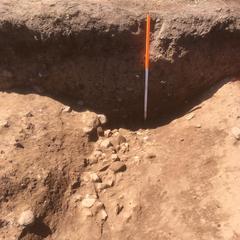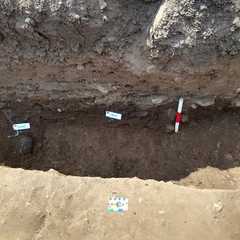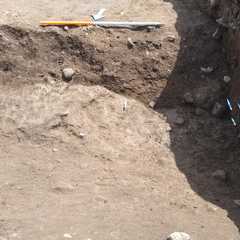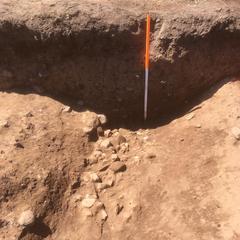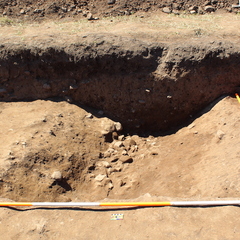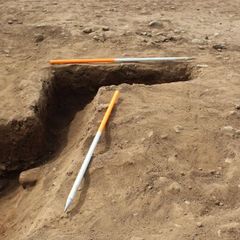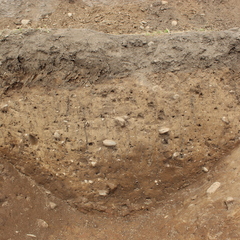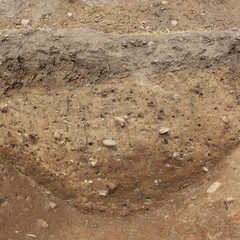Basic Information
- Boundary ditch
Contexts
Narrative
-
- The earliest feature on site was an east west aligned ditch F109. The ditch was variably filled by stone rich and clayey sand deposits, ( 1003), [1004], (1011), (1017), (1018), (1028), (1031), and (1033). The ditch measured 1.9m wide and 0.7m deep. It appears to have gradually filledwith deposits and was already at least partially filled at the time the Roman road was constructed as this truncates the ditch. The ditch can be observed on the results of previous geophysical surveys as a NW-SE aligned linear anomaly spanning the width of East Park. Two pieces of slag were collected from (1003), indicating that metalworking may have taken place near the excavation area. The slag from the boundary ditch was not dateable, although industrial waste and a hearth bottom characteristic of Iron Age metalworking were found as residual finds from later Roman features.
-
- Indie Jago
- 1-10-2020
-
- A boundary ditch which crossed the trench obliquely from west to east. The ditch truncated an earlier feature (110) which was only observed in the west facing section of the western excavated slot of the ditch. It also cut through the original narrow road (107). The boundary ditch was partially overlain by a variable pebbled surface which was probably part of the road extension phase and was cut by the enclosure ditch (105).
-
- Clair Organ
- 8-7-2019
Dating Narrative
-
- Most of the pottery found within this ditch dates to AD175/200 - 300 during the Roman period, however handmade pottery in a prehistoric tradition was identified from the feature and tentatively indicates an earlier date for the ditch.
-
- Indie Jago
- 1-10-2020

